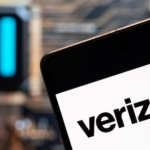To determine the risk factor, Microsoft analyzed a “dataset of 200k anonymized and privacy-scrubbed conversations between users and Microsoft Bing Copilot” to assess an AI applicability score. The jobs that appear to be most at risk, were those that involve “providing information and assistance, writing, teaching, and advising.”
That said, Microsoft cautioned that a high (or low) AI adaptability was not a sure sign that a job would or wouldn’t become obsolete.
“It is tempting to conclude that occupations that have high overlap with activities AI performs will be automated and thus experience job or wage loss, and that occupations with activities AI assists with will be augmented and raise wages,” the company wrote in the report. “This would be a mistake, as our data do not include the downstream business impacts of new technology, which are very hard to predict and often counterintuitive.”
The study’s not the first to send up a flare about creative positions. What it did that really stood out was look at the jobs where AI seems to have the lowest applicability – and healthcare and blue-collar jobs seem positioned to best withstanding an AI assault.
Here’s a ranked look at the 20 careers that posted the lowest AI applicability score:
Other jobs that are in the safety zone include industrial truck and tractor operators, highway maintenance workers, dishwashers, automotive glass installers, embalmers and phlebotomists.









